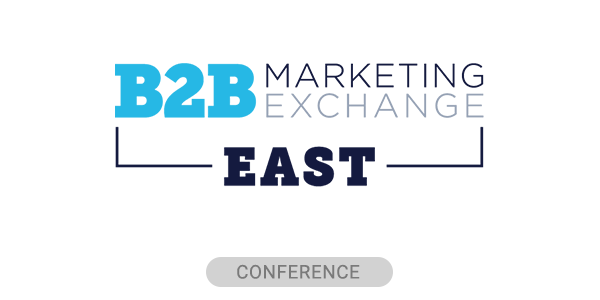Marketing is a grind. But every year, the clock starts over, offering CMOs a chance to look back at what worked, which parts of the playbook we’re throwing out, and how the past year may impact the one ahead.
As someone whose roots in the B2B marketing community go deep, here’s what I’m seeing as big marketing shifts in 2025.
More Focus on Building Brand in a Demand-Neutral Environment
As overall SaaS revenue growth continues to decelerate, we’re facing the same “demand-neutral to negative” environment. Budgets are tighter, buying criteria are stricter, and marketing teams will have to work harder to create demand, not just capture it.
Which is why brand will take center stage this year.
I say this as someone who once led growth at Marketo during the golden age of lead generation and watched it evolve into account-based marketing.
My unpopular opinion? Both miss the point.
Neither approach fully prioritizes the people behind the buying decisions. At the end of the day, why do people buy?
- Your brand: They know you and what you stand for.
- Your reputation: They know if you keep your promises (or don’t).
Brand and reputation don’t just influence demand; they create it. They shape how the right buyers perceive your company and whether they remember and choose you over competitors when they are in market. Focus too much on “capturing leads” and your brand will fade into the noise.
Yes, we need strategies to engage the right buyers. But marketing is about making your brand memorable — and building brand and reputation is the best way to do that.
Brands Will Push Beyond Generic AI Content
One sure way to enhance both brand and reputation: create authentic, compelling content.
Note I said authentic and compelling. Meaning, not just any content.
Yet we’re drowning in generic, AI-generated sludge. That’s because AI and large language models (LLMs) have driven the cost of content creation to zero.
While mediocre content might look “free,” the long-term cost to your brand is steep:
- Wasted time spent producing content that doesn’t resonate with people (there’s that word again).
- Damage done to your brand’s reputation when you’re viewed as generic.
- The growing content debt of outdated, low-value assets someone eventually has to fix or delete.
AI has its place in the content strategy — just not as the entire strategy. Gartner predicts that by 2027, 40% of organizations will fail to deliver impactful digital customer experiences because they lack AI-driven content coordination and operations.
The 60% of brands that win? They’ll use AI as a tool to enhance creativity, speed up work, and merge content and real-time data to achieve personalization. But they won’t rely on it to do the heavy lifting of strategy, storytelling, or differentiation.
(Even Big Tech gets this. For ChatGPT’s Super Bowl ad, OpenAI used Sora to jumpstart the concept and execution, but humans refined and brought it home.)
More Responsibility for Customer Marketing
In a demand-neutral environment, new customers are harder to close. CMOs will now be on the hook for making the most of the existing customer base, shifting focus beyond acquisition.
B2B marketers will face increased responsibility for customer marketing, especially upsell and cross-sell opportunities to fuel net dollar retention (NDR) growth.
To do that, we have to commit to customer obsession. That includes:
- Elevating real stories, not just glittery case studies.
- Finding ways to build customer connections through community and events.
- Turning customers into heroes by empowering the people behind the brand.
Retention and expansion matter more than ever when net new demand is scarce. In 2025, success will be about deepening relationships with current customers — and making them your biggest advocates.
B2B Will Go Bold
Boldness isn’t just for consumer brands. The B2B brands that stand out go against the grain, take risks based on gut and data, and push forward in ways that might feel uncomfortable.
Here’s a simple one: ditching unnecessary marketing templates. Structure has its place, but too many marketing plans look the same. It’s time to try new things.
A bigger example: A LinkedIn marketing influencer called out my brand for unclear website messaging. She didn’t name names, but we knew.
We had two choices:
- Ignore it and pretend nothing happened.
- Acknowledge that what we tried didn’t work, fix it, and own up to it publicly.
We chose the second. It resulted in a wave of respect, engagement, and new brand advocates. The influencer even recapped it later as one of her top five moments of the year. Because who willingly steps into a negative spotlight?
Today, 75% of brands could disappear and no one would notice. Be part of the 25% that people won’t forget. Build the brand, be smart about using technology, and be good to your loyal customers while you do it.
Gurdeep Dhillon is a seasoned marketing executive with nearly two decades of experience in enterprise software. He is currently Chief Marketing Officer at Contentstack, the composable digital experience platform powered by the #1 Headless CMS. Gurdeep is a proven driver of growth, market presence, and brand relevancy, and has applied his expertise in marketing leadership positions at SAP, Marketo, Adobe, and Zuora. His passion for fostering collaborative environments has made him a builder and grower of high-performance teams. With regional and national recognition as a top marketer, he regularly speaks at notable industry events such as Dreamforce and Adobe Summit.







